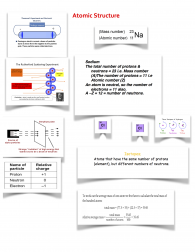Not sure about balancing equations in chemistry? Check out this guide, which explains the basic principles and provides tips so you can master this skill!
Balancing equations in chemistry can be overwhelming and confusing, but it is a skill that can be mastered with practice. This guide explains the basic principles and provides tips on how to balance equations, so you can become an expert in no time!
What is an Equation?
An equation is a statement of the relationship between two things or values. In chemistry, equations are used to describe chemical reactions, meaning what happens when two or more substances interact. They involve the use of symbols and formulas which represent elements, compounds and molecules that react with each other. Balancing equations in chemistry requires finding the correct ratio of each element and combining them into a balanced reaction.
Understand the Law of Conservation of Mass.
Before you start balancing equations, you must understand the Law of Conservation of Mass. This law states that mass is neither created nor destroyed in a chemical reaction – instead it is converted from one form to another. This means that the number of atoms of each element on the left side of your equation must equal the same number on the right side. Balancing equations is essentially a process of rearranging the atoms so they are equal on both sides.
Follow the Steps to Balance Your Equations.
Balancing equations can be a tricky task, but by following these steps you can easily master it. Step 1 – Write the skeleton equation, ensuring that symbols are accurate and equations are balanced before beginning. Step 2 – Balance elements one at a time, adjusting the coefficient for each side until both sides have the same number of atoms. Step 3 – Check your answer to make sure everything is accurate and balanced. If not, start from step 1 again until you get it right!
Commonly Used Hints and Tricks for Balancing Equations.
When attempting to balance equations, it helps to keep these hints and tricks in mind. Firstly, try to recognize patterns in the equation, as this can often reveal clues about what must be done for it to be balanced. Secondly, make sure all elements are represented on each side of the equation with their respective coefficients. Thirdly, use numbers from 1 up rather than starting at a high number; this reduces the chance of missing an element altogether. Fourthly, use fraction if necessary when balancing to get more accuracy; using one over two halves is preferable to two over four quarters!
Check the Balanced Equation Using a Calculator or App.
Checking a balanced equation using a calculator or app is a great way to make sure that you have done it correctly. Online calculators and apps such as Chem Balancer allow you to enter an unbalanced equation and the calculator will tell you what numbers should be put in front of the elements to balance it. This is especially useful for complex equations with many elements, which can sometimes be difficult to balance manually.

